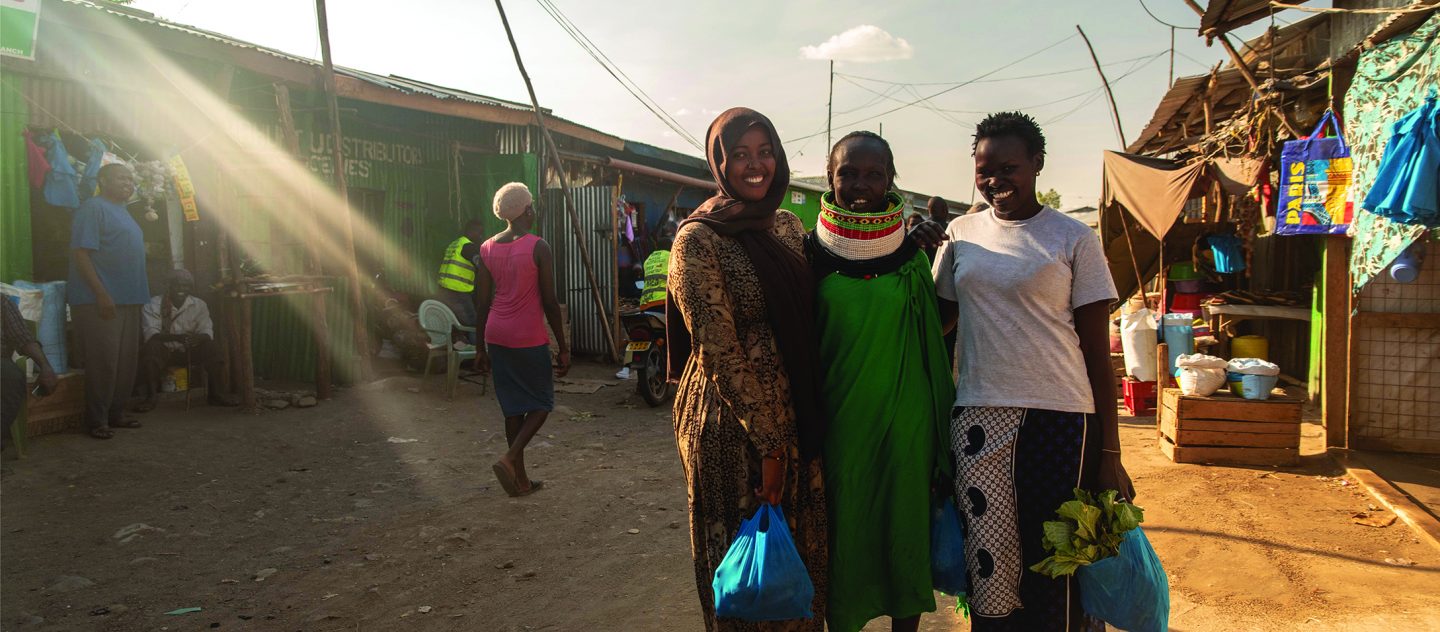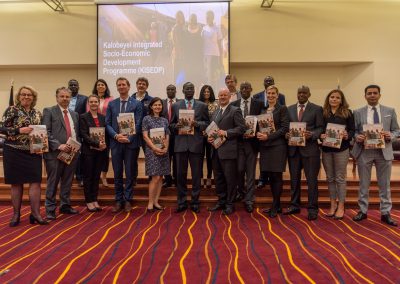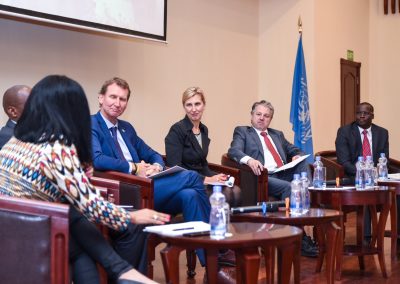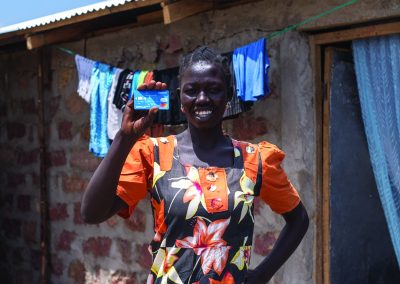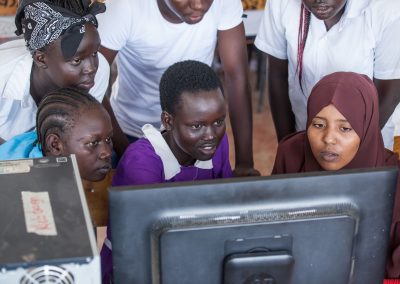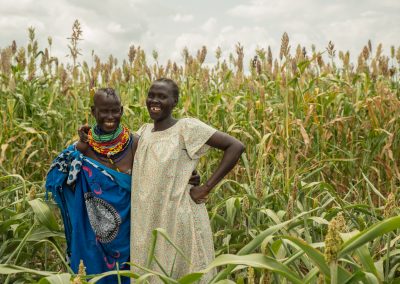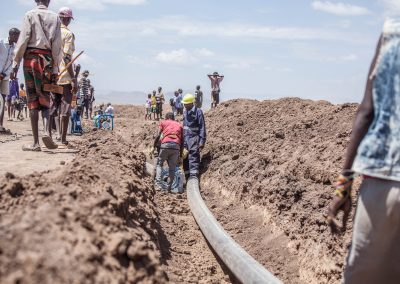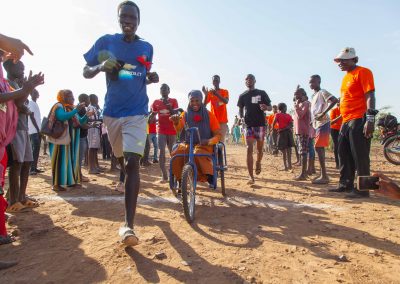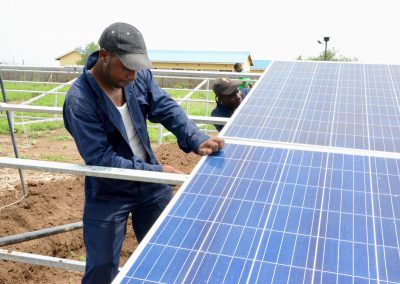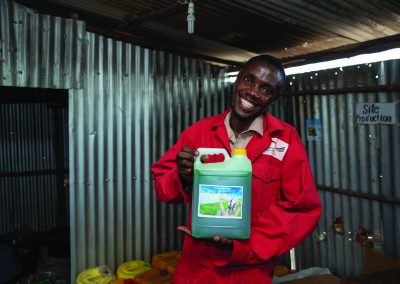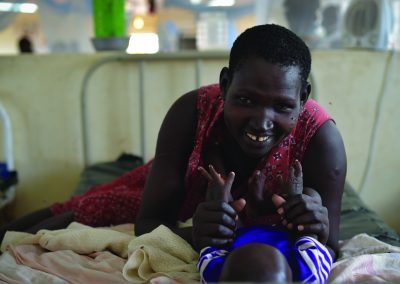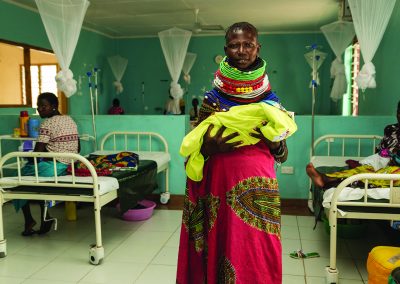Kenya has been a generous host to refugees and asylum seekers since 1992. The refugee population in Kakuma fluctuated over the years and despite the long existence of Kakuma refugee camps, 67 percent of its population only arrived in the past five years. The Turkana West population including refugees has increased by approximately 50 percent since 2013.
This makes Kakuma a vibrant place with refugees from 20 nationalities whose presence positively contribute to the local economy with increasing needs for public and private sector investments and building of marketable skills and capacities. All stakeholders agreed on a new approach to strengthen the humanitarian-development nexus and give way to allow for a sustainable growth path.
In 2015, UNHCR and the Government of Kenya agreed to pilot a new approach by developing a settlement promoting the self-reliance of refugees and the host population by enhancing livelihood opportunities and promoting inclusive service delivery. Subsequently, the County Government, UNHCR and partners embarked on a 15-year comprehensive multi-sectoral and multi-stakeholder initiative, also known as Kalobeyei Integrated Socio-Economic Development Programme (KISEDP) in Turkana West. KISEDP uses an area-based approach and will directly and indirectly benefit the Turkana West population which is comprised of approximately 186,000 refugees and 320,000 host population.
The new approach was developed around the “Choice Theory” to allow refugees and the host population to maximize their potential in an enabling environment. The theory has two main building blocks which inform the overall goal of KISEDP. Firstly, it aims to create an enabling environment, in which inclusive service delivery and local capacities are strengthened, legal frameworks and policies are improved, a conducive environment for investment and job creation is promoted and communities’ resilience is strengthened. It also aims to build people’s skills and capabilities to successfully function in this new environment and to enhance the overall local economy.
KISEDP interventions are structured within eight complementary and mutually-reinforcing components which are closely aligned to the CIDP sectors. Each component has its own sectoral objectives, indicators and budgets that directly contribute to one or more of the four strategic objectives. Cross-cutting elements include the strengthening of institutional and technical capacities of Government and local partners, private sector engagement, introduction of innovative delivery models and protection mainstreaming, gender equality and woman empowerment as well as disability inclusion. Partners identified key flagship projects under each component to address key challenges identified. These projects are prerequisites that address a strategic issue, and/or generate a model solution and/or contribute to the national and international visibility of the impact achieved in Turkana West.
The implementation of KISEDP is co-led by the County Government, and UNHCR, in close collaboration with all partners and with an initial financial support of the European Union complementing other multilateral and bilateral assistance in Turkana West. It follows a three-phase approach with a preparatory stage in 2016-2017 followed by Phase I (2018-2022), Phase II (2023-2027) and Phase III (2028-2030). A steering committee will provide the necessary oversight and guidance on policy matters, while a secretariat will facilitate effective communication amongst all stakeholders Programmatic and technical discussions will also be coordinated on a quarterly basis through Government-led thematic working groups.
During phase I of KISEDP the need for accessible basic social services provision and protection for refugees and host communities in Turkana West will continue to be funded while efforts to strengthen the humanitarian-development nexus and scale up innovative delivery modalities such as cash-based interventions (CBIs) will gradually be increased. Partners will also use their comparative advantages to further enhance technical and institutional capacities and promote inclusive national service delivery systems for better resilience and sustainability.
To identify socio-economic ranking amongst the populations, partners will conduct regular comprehensive socio-economic profiling exercises which will allow for monitoring of vulnerabilities over time and ensure assistance is efficient and done in an equitable manner. In subsequent phases, assistance to the very poor will increasingly be implemented through cash transfers and inclusive social safety nets based on vulnerability and poverty levels.
The KISEDP is an integral part of the County Integrated Development Plan (CIDP II) and is informed by the outcomes of the 2016 World Humanitarian Summit, the Global Compact on Refugees (GCR) and puts the Comprehensive Refugee Response Framework (CRRF) and the Nairobi Declaration and Action Plan (NAP) into practice in Turkana West. It is also aligned with the national development strategy Kenya Vision 2030 which outlines the country’s development priorities and strategies.
KISEDP budget requirements are focused on interventions that promote socio-economic inclusion of refugees and contribute to the economic growth of Turkana West. The estimated resources required for Phase I have been estimated at 500 million USD. Multiple financing streams, including humanitarian, development, government, and private sector, will be mobilized to finance KISEDP’s activities. In addition, KISEDP Secretariat will work with the various humanitarian, development and private sector actors to support the resource mobilization activities. The immediate needs for refugees for life saving purposes are covered separately.
The KISEDP secretariat through its M&E unit will design a robust methodology for monitoring and evaluation using a risk-based management perspective which will ensure that proper controls are put in place and reliable analysis is used to ensure continuous improvement. Based on the initial risk analysis submitted, risk logs will be established and regularly updated by reviewing the external environment that may affect the KISEDP implementation.
Calendar- Thematic Working Group (TWG) Meetings
KISEDP Presentation to SC meeting in October 2019
Minutes – Steering Committee Meeting October 2019
Minutes – Steering Committee Meeting April 2019
Steering Committee Members 2018 – 2022

